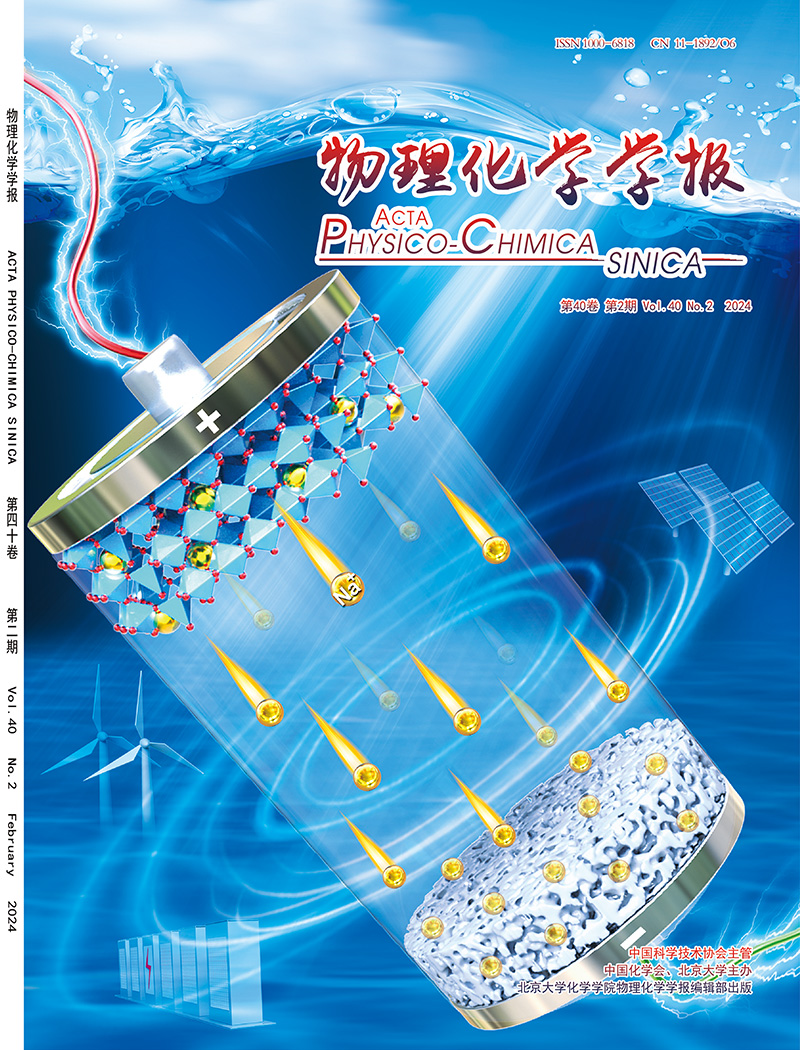氧化卤化铋光活性材料高效光电化学应用的工程多重优化策略
IF 13.5
2区 化学
Q1 CHEMISTRY, PHYSICAL
引用次数: 0
摘要
光电化学(PEC)技术作为一种简单的太阳能转换装置,是解决环境和能源挑战的最有前途的解决方案之一。PEC技术主要涉及光活性材料在光照射下通过载流子激发和电荷转移的光转化过程,活性材料在整个系统中起着核心作用。高PEC活性材料的设计和合成是实现高效PEC性能的关键。光活性材料的光电转换效率主要取决于广泛的光吸收响应范围和光生成载流子的快速分离/转移速率。常见的光敏半导体可作为光电活性材料,包括金属氧化物、金属硫化物、有机小分子和有机聚合物。然而,由于使用单一半导体材料的固有限制,实现高光电转换效率是具有挑战性的。探索具有特定结构成分的功能复合材料可以克服单个半导体材料的性能缺陷。此外,太阳光谱的紫外区仅占5%左右,而可见光区约占45%。开发由可见光驱动的光电催化活性材料,如银、铋和有机高分子材料,对光电催化技术的商业化应用至关重要。由于氧化卤化铋BiOX (X = Cl, Br, I)基材料具有带隙可调、层状结构独特、无毒性、光吸收范围宽、光稳定性突出等特点,基于BiOX (X = Cl, Br, I)的PEC技术已成为热门研究课题。本文综述了BiOX (X = Cl, Br, I)基材料的理化性质。从表面和界面两方面讨论了改性BiOX (X = Cl, Br, I)基材料的方法。这些修饰的目的是提高太阳光的利用率,抑制光生电子和空穴的复合。此外,还重点介绍了在微结构调制、表面空位、官能团修饰、金属负载、杂原子掺杂和异质结构建等方面的研究进展。通过各种设计策略,可以有效地提高BiOX (X = Cl, Br, I)中光生载流子的分离效率,从而提高其在PEC中的应用性能。介绍了改性BiOX (X = Cl, Br, I)在PEC传感、PEC水分解、光电催化降解、CO2还原、固氮和光催化燃料电池等方面的重要应用。最后,讨论了BiOX (X = Cl, Br, I)材料在上述应用中面临的挑战,并对BiOX (X = Cl, Br, I)材料未来的研究和实际应用进行了展望。本文章由计算机程序翻译,如有差异,请以英文原文为准。

Engineering multiple optimization strategy on bismuth oxyhalide photoactive materials for efficient photoelectrochemical applications
The photoelectrochemical (PEC) technique, as a simple solar energy conversion device, is one of the most promising solutions for addressing both environmental and energy challenges. PEC technique mainly involves the photoconversion process of photoactive materials through carrier excitation and charge transfer under light irradiation, and the active material plays a central role in the entire system. The design and synthesis of highly PEC active materials is crucial for achieving efficient PEC performance. The photoelectric conversion efficiency of photoactive materials mainly depends on broad range of light absorption response and rapid separation/transfer rate of photogenerated carriers. Common photosensitive semiconductors can be used as photoelectric active materials, including metal oxides, metal sulfides, organic small molecules and organic polymers. However, achieving a high photoelectric conversion efficiency is challenging due to the inherent limitations of using a single semiconductor material. Exploring functional composites with specific structural compositions can overcome the performance deficiencies of individual semiconductor materials. In addition, the ultraviolet region of the solar spectrum accounts for only about 5 %, while visible light accounts for approximately 45 %. The development of PEC active materials that can be driven by visible light, such as silver, bismuth, and organic polymer materials, is crucial for the commercial application of PEC technique. Due to the characteristics of bismuth oxyhalide BiOX (X = Cl, Br, I)-based materials, such as an adjustable band gap, a unique layered structure, non-toxicity, a wide light absorption range and outstanding light stability, the PEC technique based on BiOX (X = Cl, Br, I) has become a popular research topic. In this paper, the physicochemical properties of BiOX (X = Cl, Br, I)-based materials are reviewed. The methods used to modify BiOX (X = Cl, Br, I)-based materials from the perspectives of surface and interface are discussed. These modifications aim to improve the utilization rate of sunlight and inhibit the recombination of photogenerated electrons and holes. Additionally, the research progress in microstructure modulation, surface vacancy, functional group modification, metal loading, heteroatom doping and heterojunction construction is emphasized. Through various design strategies, the separation efficiency of photogenerated carriers in BiOX (X = Cl, Br, I) can be effectively enhanced, thereby improving its performance in PEC applications. The significant contributions of modified BiOX (X = Cl, Br, I) to various applications, including PEC sensing, PEC water splitting, photoelectrocatalytic degradation, CO2 reduction, nitrogen fixation and photocatalytic fuel cells are described. Finally, the challenges in the aforementioned applications of BiOX (X = Cl, Br, I) materials are discussed, and the future research and practical application of BiOX (X = Cl, Br, I) are prospected.
求助全文
通过发布文献求助,成功后即可免费获取论文全文。
去求助

 求助内容:
求助内容: 应助结果提醒方式:
应助结果提醒方式:


